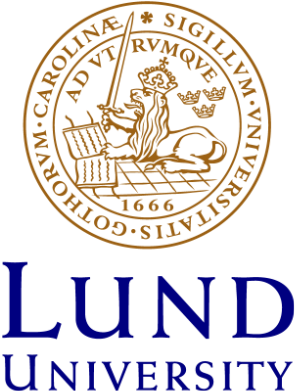Search results
Filter
Filetype
Your search for "*" yielded 534997 hits
Tourism revisited : The influence of digitalisation on tourism concepts
Information and communication technology (ICT) is ubiquitous in tourism and this changes not only tourists’ immediate behaviour, but also what tourism is. In this way, digitalisation is shifting perceptions of when tourism starts and ends, and how we can understand the term in principal ways. The aim of this working paper is to contribute to the debate about the consequences of today´s fast digita
Innovate or die eller Innovate and die
RIFM fragrance ingredient safety assessment, 4,8-undecadienal, (4Z,8Z)-, CAS Registry Number 1882830-62-7
No title
Transitions in medical education are moments of intense learning, bringing significant challenges for the trainees, the medical programs and healthcare provision. Frequently, transitional periods are not prepared or mentored; this process of transformation in the trainee is left to occur by chance and opportunity. Promotion of medical education continuity requires formal support in the continuous
RIFM fragrance ingredient safety assessment, 2,2-dimethyl-3-(3-methyl-2,4-pentadienyl)oxirane, CAS Registry Number 69103-20-4
RIFM fragrance ingredient safety assessment, 6,10-dimethylundeca-5,9-dien-2-one, CAS registry number 689-67-8
Supercapacitive biofuel cells
Supercapacitive biofuel cells’ (SBFCs) most recent advancements are herein disclosed. In conventional SBFCs the biocomponent is employed as the pseudocapacitive component, while in self-charging biodevices it also works as the biocatalyst. The performance of different types of SBFCs are summarized according to the categorization based on the biocatalyst employed: supercapacitive microbial fuel cel
Tissue architecture delineates field cancerization in brafv600e-induced tumor development
Cancer cells hijack developmental growth mechanisms but whether tissue morphogenesis and architecture modify tumorigenesis is unknown. Here, we characterized a new mouse model of sporadic thyroid carcinogenesis based on inducible expression of BRAF carrying a Val600 Glu (V600E) point mutation (BRAFV600E) from the thyroglobulin promoter (TgCreERT2). Spontaneous activation of this Braf-mutant allele
Hepatitis C treatment at a Swedish needle exchange program, a successful model of care – the ACTIONNE study
Background: To engage people who inject drugs (PWID) in HCV care, innovative models of care are urgently needed. A needle exchange program (NEP) could serve as an ideal platform for comprehensive HCV management including post treatment follow up. Methods: 50 actively injecting patients at the Malmö Needle exchange program (MNEP) were consecutively enrolled between April 2018 and May 2019. All pati
RIFM fragrance ingredient safety assessment, 2,6-octadienal, 3,6,7-trimethyl-, CAS Registry Number 1891-67-4
Drought legacies on soil respiration and microbial community in a Mediterranean forest soil under different soil moisture and carbon inputs
Soil moisture can strongly affect the fate of soil organic carbon (C) during microbial decomposition, but the characterisation and prediction of the effects remain challenging, especially the long-term effects of drought history and its interaction with current levels of soil moisture. We investigated the legacy effects of drought on soil activity and microbial community composition and its intera
Phosphorus-arsenic interaction in the ‘soil-plant-microbe’ system and its influence on arsenic pollution
Elevated arsenic (As) in soil is of public concern due to the carcinogenicity. Phosphorus (P) strongly influences the adsorption, absorption, transport, and transformation of As in the soil and in organisms due to the similarity of the chemical properties of P and As. In soil, P, particularly inorganic P, can release soil-retained As (mostly arsenate) by competing for adsorption sites. In plant an
“The Hultqvist doctrine”–Swedish security and defence policy after the Russian annexation of Crimea
This article analyses how Sweden has adapted to the worsened security situation in its vicinity following Russia’s illegal annexation of Crimea and war in Eastern Ukraine. The paper builds on security policy research focused on neoclassic realism and small state strategies in order to explore how the, broadly unknown, security policy from 2009 has been implemented in practice since 2014, through w
RIFM fragrance ingredient safety assessment, cinnamyl butyrate, CAS Registry Number 103-61-7
RIFM fragrance ingredient safety assessment, 2,7-decadienal, (2E,7Z)-, CAS Registry Number 52711-52-1
Genetic regulation of spermine oxidase activity and cancer risk : a Mendelian randomization study
Spermine oxidase (SMOX) catalyzes the oxidation of spermine to spermidine. Observational studies have reported SMOX as a source of reactive oxygen species associated with cancer, implying that inhibition of SMOX could be a target for chemoprevention. Here we test causality of SMOX levels with cancer risk using a Mendelian randomization analysis. We performed a GWAS of spermidine/spermine ratio to
RIFM fragrance ingredient safety assessment, cyclohexadecanone, CAS Registry Number 2550-52-9
RIFM fragrance ingredient safety assessment, 3-propylidenephthalide, CAS Registry Number 17369-59-4
Evidence for genetic integration of mating behavior and morphology in a behaviorally plastic alternative reproductive tactic
Alternative reproductive tactics (ARTs) often exhibit more than one mating behavior depending on social context (i.e., behavioral plasticity). It has been hypothesized that by constraining an ART from reaching optimal morphological states, intralocus tactical conflict could promote the maintenance of behavioral plasticity in ARTs, rather than the use of a fixed mating behavior to match an optimal
